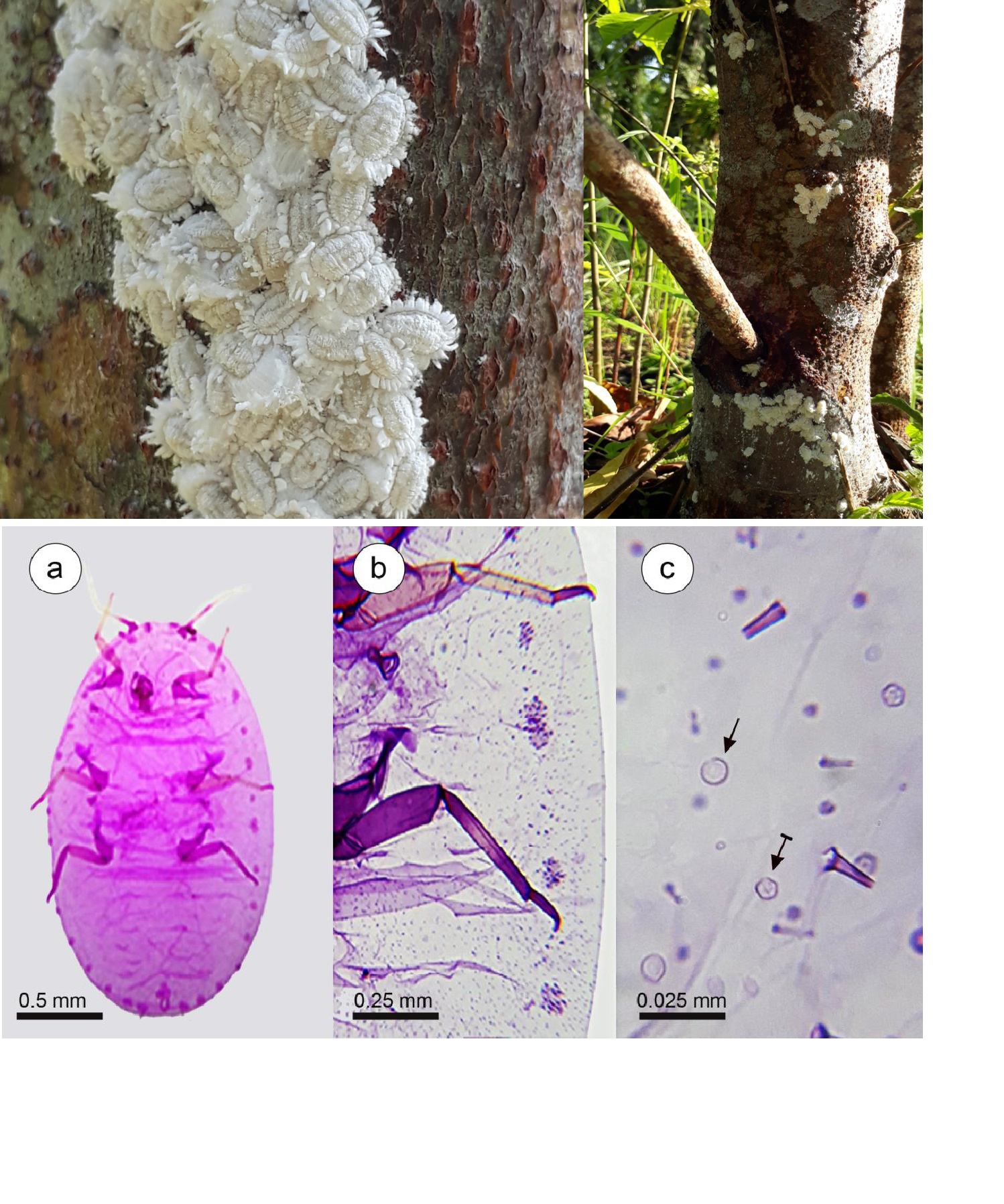Valid Names Results
Rastrococcus tropicasiaticus Williams, 2004 (Pseudococcidae: Rastrococcus)Nomenclatural History
- Rastrococcus tropicasiaticus Williams 2004a: 739. Type data: MALAYSIA: Selangor, Kepong, on Ficus sp.; collected D.J. Williams, 3.iv.1994.. Holotype, female, Type depository: London: The Natural History Museum, England, UK; accepted valid name Illustr.
Common Names
Ecological Associates
Hosts:
Families: 8 | Genera: 10
- Anacardiaceae
- Mangifera indica | Willia2004a
- Apocynaceae
- Cerbera manghas | ZarkanSuNa2021
- Lamiaceae
- Tectona grandis | ZarkanSuNa2021
- Meliaceae
- Azadirachta excelsa | ZarkanErAp2023
- Melia azedarach | Willia2004a | (= Azadirachta indica)
- Moraceae
- Ficus | Willia2004a
- Ficus grossularioides | Willia2004a
- Poaceae
- Poaceae | Willia2004a
- Rutaceae
- Citrus | Willia2004a
- Sapindaceae
- Dimocarpus longan | ZarkanSuNa2021
- Nephelium lappaceum | Willia2004a
Geographic Distribution
Countries: 5
- Indonesia | ZarkanSuNa2021
- Sumatra | ZarkanSuNa2021
- Malaysia
- Malaya | Willia2004a
- Sabah | Willia2004a
- Sarawak | Willia2004a
- Philippines | Willia2004a
- Thailand | Willia2004a
- Vietnam | Willia2004a
Keys
- Willia2004a: pp.715-716 ( Adult (F) ) [Rastrococcus species of southern Asia]
Remarks
- Systematics: R. tropicasiaticus is very close to R. biggeri, described from the Solomon Islands, in possessing marginal multilocular disc pores on the venter of the head, thorax and abdomen, and dorsal large-type quinquelocular pores. However, in R. biggeri the multilocular disc pores are numerous on the head and thorax, and extend in a zone to the margins whilst in R. tropicasiaticus the marginal multilocular disc pores are few. The species is also similar to R. jabadiu by having large-type quinquelocular pores on the dorsum but they can be easily differentiated by the presence of multilocular disc pores on the ventral margin of the thorax . (Zarkani, et al, 2021)
- Structure: Living adult female body is covered in the copious secretion of white wax and resembling a species of Icerya (Monophlebidae). In slide-mounted specimens, the body of the adult female is broadly oval, about 4.25 mm long and 2.75 mm wide. Antennae with 9 segments, legs well developed, long and slender. (Zarkani, et al., 2021)
- Economic Importance: In the sapling stages, leaves of plants curl, turn yellow and die due to high infestation of the scales. (Zarkani, et al., 2021
- General Remarks: Description and illustration of adult female by Williams (2004a).
Illustrations
Citations
- ChoiLe2022: phylogeny, 358, 362
- Willia2004a: description, distribution, host, illustration, taxonomy, 739-743
- ZarkanErAp2023: distribution, host, 170
- ZarkanSuNa2021: distribution, host,



